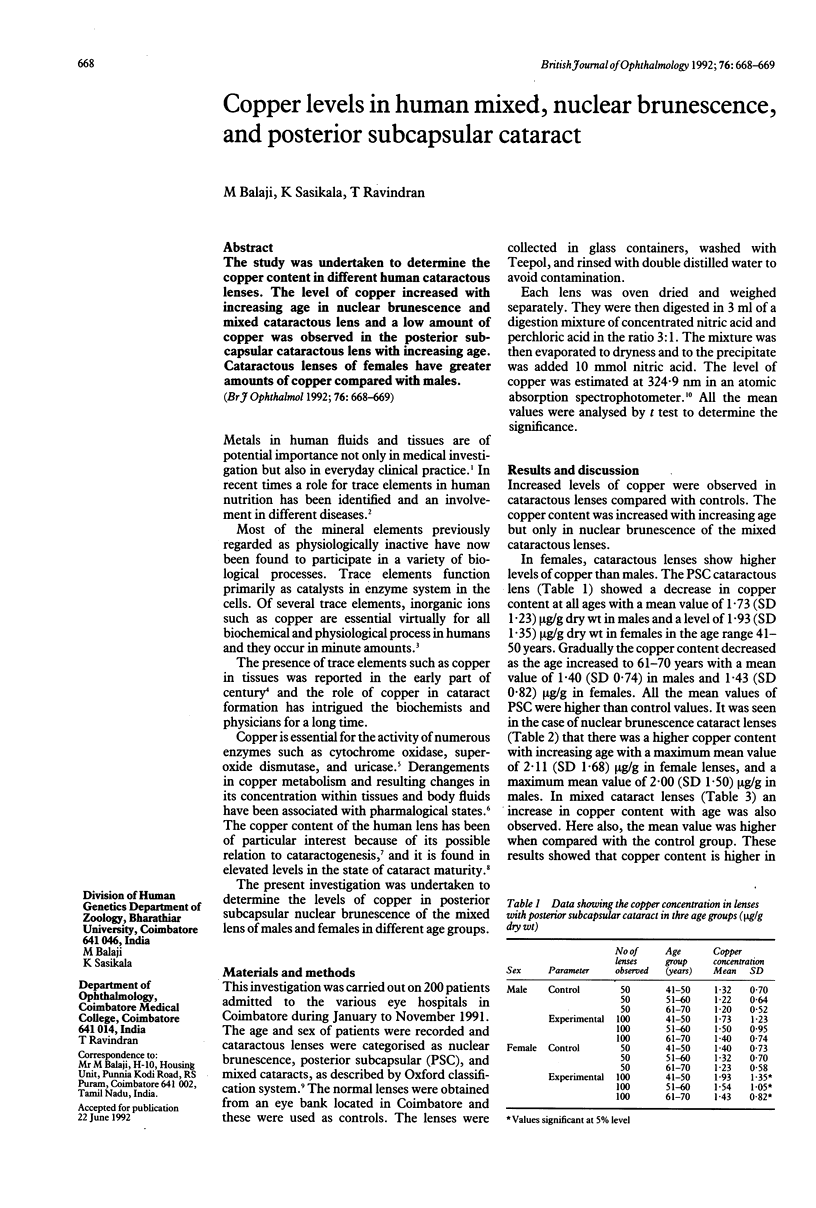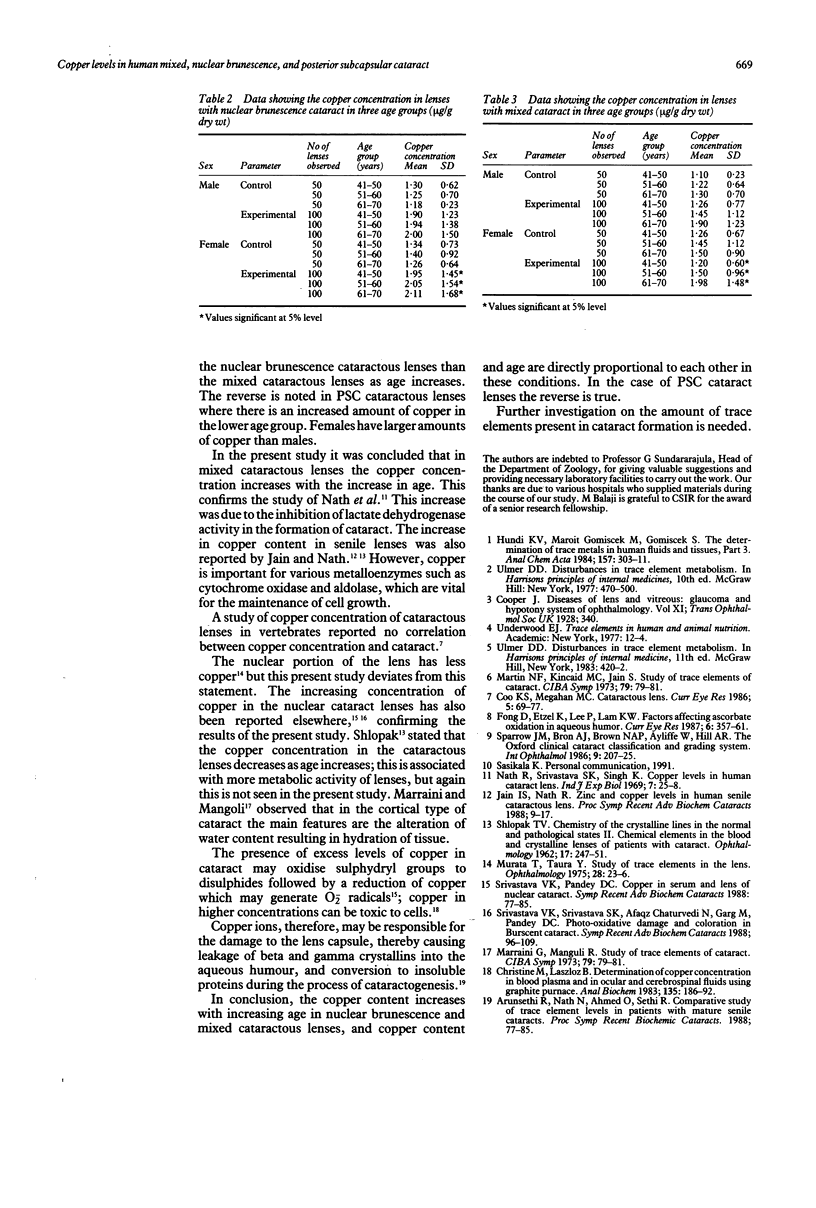Abstract
The study was undertaken to determine the copper content in different human cataractous lenses. The level of copper increased with increasing age in nuclear brunescence and mixed cataractous lens and a low amount of copper was observed in the posterior subcapsular cataractous lens with increasing age. Cataractous lenses of females have greater amounts of copper compared with males.
Full text
PDF

Selected References
These references are in PubMed. This may not be the complete list of references from this article.
- Cook C. S., McGahan M. C. Copper concentration in cornea, iris, normal, and cataractous lenses and intraocular fluids of vertebrates. Curr Eye Res. 1986 Jan;5(1):69–76. doi: 10.3109/02713688608995168. [DOI] [PubMed] [Google Scholar]
- Fong D., Etzel K., Lee P. F., Lin T. Y., Lam K. W. Factors affecting ascorbate oxidation in aqueous humor. Curr Eye Res. 1987 Feb;6(2):357–361. doi: 10.3109/02713688709025188. [DOI] [PubMed] [Google Scholar]
- Nath R., Srivastava S. K., Singh K. Accumulation of copper and inhibition of lactate dehydrogenase activity in human senile cataractous lens. Indian J Exp Biol. 1969 Jan;7(1):25–26. [PubMed] [Google Scholar]
- Sparrow J. M., Bron A. J., Brown N. A., Ayliffe W., Hill A. R. The Oxford Clinical Cataract Classification and Grading System. Int Ophthalmol. 1986 Dec;9(4):207–225. doi: 10.1007/BF00137534. [DOI] [PubMed] [Google Scholar]


